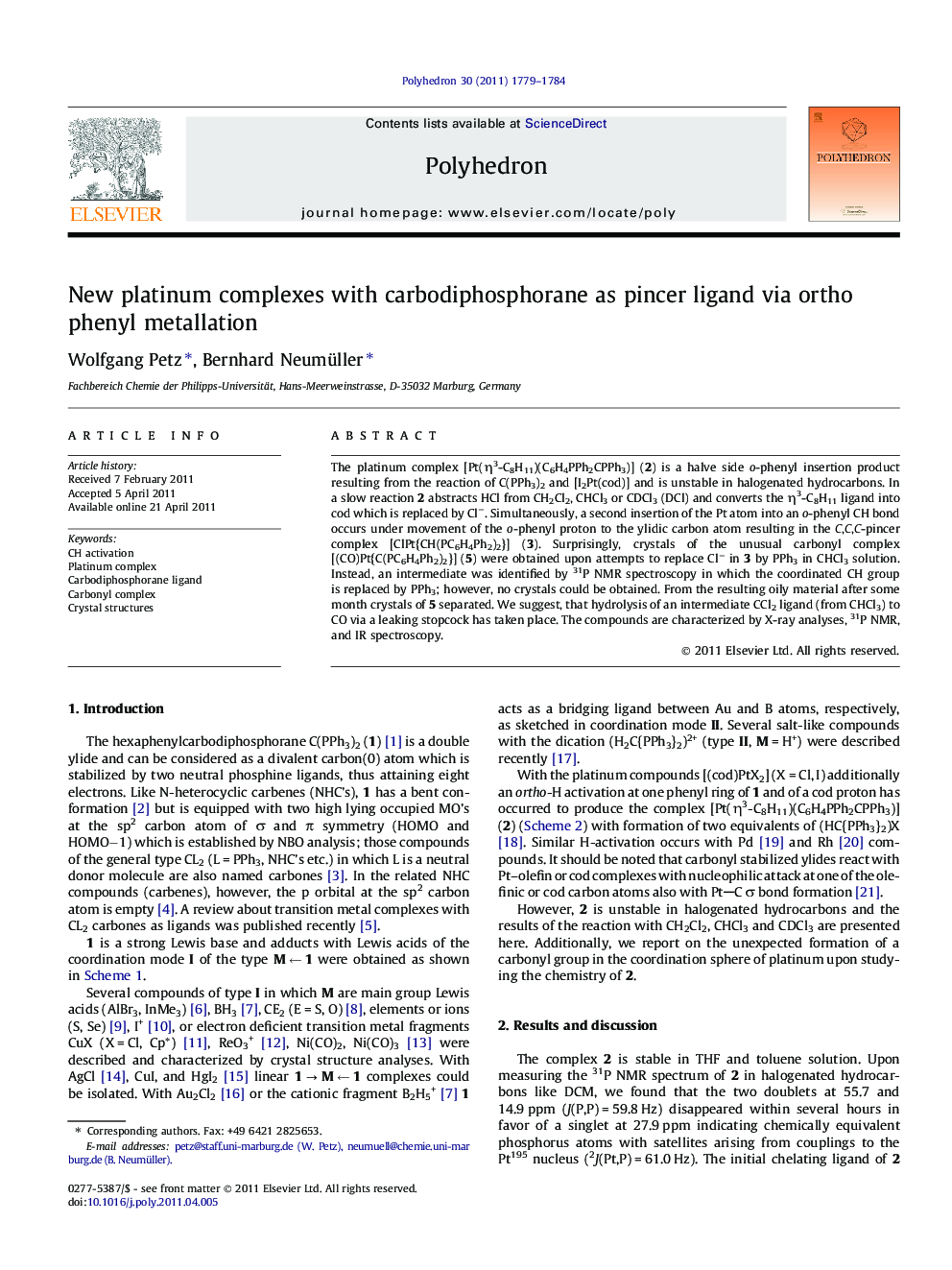| Article ID | Journal | Published Year | Pages | File Type |
|---|---|---|---|---|
| 1336075 | Polyhedron | 2011 | 6 Pages |
The platinum complex [Pt(η3-C8H11)(C6H4PPh2CPPh3)] (2) is a halve side o-phenyl insertion product resulting from the reaction of C(PPh3)2 and [I2Pt(cod)] and is unstable in halogenated hydrocarbons. In a slow reaction 2 abstracts HCl from CH2Cl2, CHCl3 or CDCl3 (DCl) and converts the η3-C8H11 ligand into cod which is replaced by Cl−. Simultaneously, a second insertion of the Pt atom into an o-phenyl CH bond occurs under movement of the o-phenyl proton to the ylidic carbon atom resulting in the C,C,C-pincer complex [ClPt{CH(PC6H4Ph2)2}] (3). Surprisingly, crystals of the unusual carbonyl complex [(CO)Pt{C(PC6H4Ph2)2}] (5) were obtained upon attempts to replace Cl− in 3 by PPh3 in CHCl3 solution. Instead, an intermediate was identified by 31P NMR spectroscopy in which the coordinated CH group is replaced by PPh3; however, no crystals could be obtained. From the resulting oily material after some month crystals of 5 separated. We suggest, that hydrolysis of an intermediate CCl2 ligand (from CHCl3) to CO via a leaking stopcock has taken place. The compounds are characterized by X-ray analyses, 31P NMR, and IR spectroscopy.
Graphical abstractUnder the influence of halogenated hydrocarbons the platinum complex 2 is converted into 3 upon HCl abstraction from the solvent. The η3-bonded C8H11 ligand of 2 is protonated and the resulting cod is replaced by Cl−; simultaneously, the PtC unit inserts into the ortho-CH bond of a phenyl ring resulting in a C,C,C-pincer ligand. 3 and the carbonyl complex 5 containing the deprotonated C,C,C-pincer ligand of 3 and a CO group instead of the Cl− were characterized by X-ray analyses and spectroscopic methods.Figure optionsDownload full-size imageDownload as PowerPoint slideHighlights► The complex [Pt(η3-C8H11)(C6H4PPh2CPPh3)] reacts with halogenated hydrocarbons under withdrawal of HCl to give the C,C,C-pincer complex [ClPt{CH(PC6H4Ph2)2}] (3). ► Protonation of the η3-C8H11 ligand gives cod which is replaced by Cl−. ► The structures of [ClPt{CH(PC6H4Ph2)2}] (3) and [(CO)Pt{C(PC6H4Ph2)2}] (5) have been determined by X-ray diffraction. ► The CO group in 5 formed probably via hydrolysis of an intermediate dichlorocarbene complex in HCCl3 solution.
